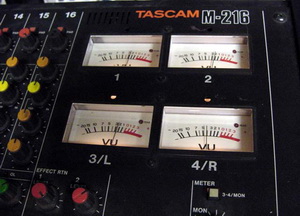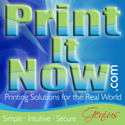| « Tasty Guitar Riffs from NAMM 2010 #4 | What To Do This Weekend? Music Is In the Air » |
Peeking In the Holes
Hey sports fans! I’m back and we are going to take another look at some potential problems with levels that may be hiding in your holes and your DAW can’t even spot them. But have no fear, I’ll let you know how to spot them and – you’re going to like this – the answer will be FREE! Some people don’t care for four-letter words and others use them so often that they are a kind of ebonic punctuation, but one four-letter word that should appeal to all of us, in today’s economy, is free.
Now let’s get loud, and therein lies our problem. If you are a mixing engineer you have always had a love/hate relationship with loudness. We know that loudness is good, it is desirable and it works. You have heard the line, “The squeaky wheel gets the grease,” right? It’s true; when you’ve got the loudest voice, you get noticed. If we are mixing a song for radio play, we want it to be the loudest or at least as loud as the last tune was. The producer tells you that he wants it to jump out at the listener. Gosh, you would think your music was a ghost attraction at a haunted house. If you are mixing a television commercial, the agency always wants theirs to be the loudest so that it will stand out from the other moron’s attempts to schlep worthless products into everyone’s hands. Wouldn’t you like to own a Snug Wow. Just imagine how stylish you’ll feel mixing in a blanket with two sleeves attached to it and if you order right now, we’ll include another worthless something or maybe just two of the same thing so that your dog can dress as badly as you and we can only do this for the next ten minutes; this is TV and you can’t lie on TV. That’s BS, but being loud has become a goal and a routine assignment for a mixing engineer.
Don’t believe, however, that just because you need to get loud, it is going to be easy. You can’t just grab a fist full of faders and shove them to the top to win the game. You must exercise restraint, or as Captain Kirk might have said, “Phasers on stun.” Because there are rules and there are audio traffic cops waiting out there to impede your way.
The rules involve distortion and the traffic cop is the FCC. The cop thing is real simple: radio and television stations cannot allow their audio to exceed a certain maximum volume level, so they all have installed limiters to make sure that their signal does not go above a prescribed maximum limit. They just chop it off right there and that doesn’t make your sound good. But (add a thick German accent here), “We have ways.”
How many times have you heard, “Why are the commercials so much louder than the show?” Well, the fact is that they are not. Oh, their average loudness level is much higher than the show’s. Just watch the VU meter and you’ll see program audio swing through its entire range while the commercial has the VU needle sitting, quivering like a whipped dog at the top of the scale. It’s a good trick and we all use compressors to achieve it. It works for songs on the radio as well, but, of course, too much compression and your music sounds like it’s coming out of a cracker box.
Another rule is that if your level goes above zero VU, it is going to distort. Well, us old guys, from the analog days, were used to pushing +3 and even +6 and we could get away with it because analog gave a kind of nice warm distortion as we went over the top. Digital, I’m afraid, is not quite so friendly. If you exceed zero in the digital world it generates bad math; wrong numbers that, when processed back to analog so a human can hear them, result in ugly, crackling sounds, not classic, happy distortion. So we have learned to keep it below zero. Period. No ifs, ands or buts.
But are we really keeping it below zero? The answer, sadly, is no. The metering software that is used by most DAWs measures the level of sample peaks. When the D to A converts them back to analog, it interpolates a curve between each sample. If two samples are at a peak of zero then the curve exceeds the zero point and this excursion into the red zone is not displayed on your meters because they are only measuring the sample’s peaks. Is this a little confusing? Well, go to this web site. It belongs to Solid State Logic, a company with impeccable credentials in the recording world. When you go there they are going to give you, for free, a eX-ISM plug in that will measure the true peaks and explain exactly what, why and how. It’s free education and free software and that’s a deal that I just love.




